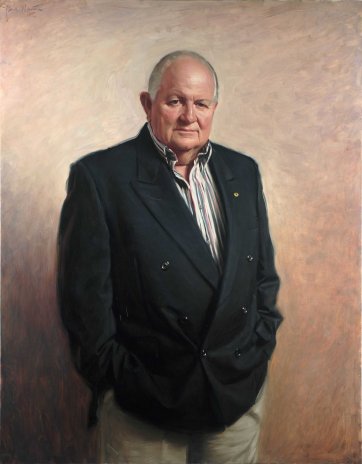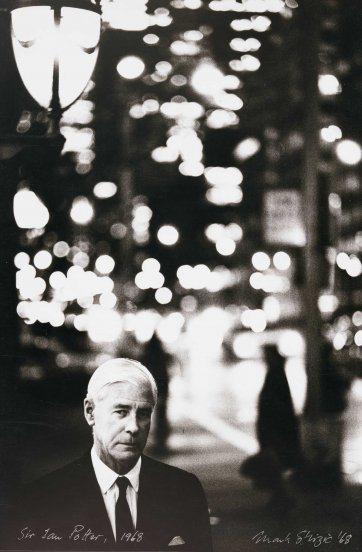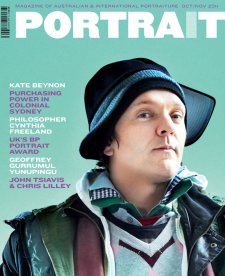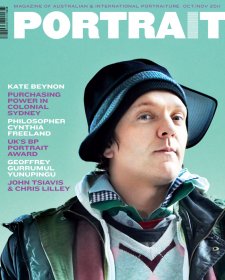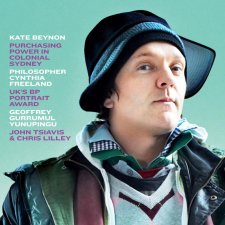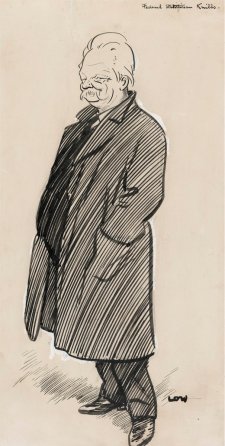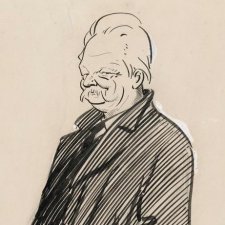Contemporary portraits the National Portrait Gallery collection represent aspects of the lives of people who have been born in Australia or who have made this country their home. A portrait can powerfully evoke the character of the sitter; give some sense of a person’s presence, their attitude, their sense of self. The collection displays also manifest broad and deep experiences that have a strong impact on identity. Unspoken relationships between the portraits on display allude to stories of encounter between different cultural groups and different generations. Australian history is marked by stories of arrival, by the shared experiences of making a new home and a new life for generations of migrants. Creating a group identity and as an individual identifying with the group or thinking differently, defines our experience.
Our varied life experiences help define our values and our sense of self. The National Portrait Gallery acknowledges unique achievements across all areas of interest and expertise. The collection celebrates those in our history who inspire us because of their commitment to their cause and craft, their unique and enduring voice, their thinking ‘outside the square’, their belief in themselves and their communities. The collection includes many portraits of individuals who have made significant contributions to their communities. It happens that some have also been supporters of the National Portrait Gallery.
Artist Paul Newton’s painted portrait of sportsman David Campese is a popular favourite whenever it is on display. The painting was purchased with funds from the Basil Bressler Bequest, and it has a casual air and striking effect of likeness. Newton’s portrait of entrepreneur Patrick Corrigan is equally affecting in its evocation of the character of the sitter and its relaxed atmosphere. Corrigan, donated the portrait to the Gallery.
Patrick Corrigan AM, freight entrepreneur and arts benefactor, came to Australia in 1945, having spent four years with his English mother in a Hong Kong prison camp. In 1967, with a loan of $1 000, he established Corrigan’s Express with his mother as his office secretary. From there, he went on to become the head of several international freight companies. Corrigan has had a collector’s instinct since childhood. Through freighting books he became interested in book collecting, and over time built a significant library of books, journals and letters relating to Australian art and artists. At the same time, he built up an art collection. Most of the objects he amassed have now been sold or given to public institutions, including the Art Gallery of New South Wales, the Gold Coast Regional Gallery and the State Library of Queensland. He has donated or facilitated the acquisition of many works for the National Portrait Gallery, including more than 100 photographs of Australian artists by Greg Weight. In 2009 Corrigan provided funds for a portrait commission of musician Paul Grabowsky by Martin Philbey.
Artist Anne Zahalka is known for her striking photographic work exploring relationships between portraiture, interiors, a sense of place and history and identity. The Gallery hosted a survey exhibition of the artist’s work in 2007 and in 2010 with funds provided by Tim Fairfax, Zahalka was commissioned to create a portrait of Marilyn Darling. The resulting portrait is a vibrant portrayal presented as a luminous backlit transparency in a lightbox.
Marilyn Darling AC is a Founding Patron of the National Portrait Gallery and was Chair of the Gallery’s advisory board from 2000 until 2008. Having studied science at the University of Queensland, she worked in the Department of Microbiology at the University of Melbourne in the late 1960s, and undertook postgraduate study in the Medical School of Monash University from 1973 to 1978. By the mid-1980s she had an active role supporting the arts and health in the Australian community. Soon after she married Gordon Darling in 1989, the couple convened the exhibition Uncommon Australians: Towards an Australian Portrait Gallery, which toured nationally in 1992–93. Since the National Portrait Gallery was established in 1998 Marilyn Darling has funded the acquisition of many works for its collection. Marilyn Darling has provided funds for major Gallery commissions including portraits of paediatrician Dr John Yu by Ah Xian, fashion entrepreneurs Heidi Middleton and Sarah-Jane Clarke by Deborah Paauwe, and cultural scholar Marcia Langton by Brook Andrew. The introductory exhibition gallery is named in Marilyn Darling’s honour.
Bryan Westwood’s painted portrait of Sir Ian Potter shows the sitter in his academic robes, having received an honorary doctorate in law from the University of Melbourne in 1973. This portrait, donated to the Gallery by Lady Primrose Potter AC shows Ian Potter relaxed while in ceremonial dress. Another aspect of Potter’s character is captured in a portrait photograph purchased with funds provided by Sir Roderick Carnegie. Photographer Mark Strizic’s atmospheric image captures Potter with the evocation of a calm and composed mind against the pulsing surrounds of New York city’s Park Avenue at twilight.
Sir Ian Potter (1902–1994) was the founder of The Ian Potter Foundation, one of Australia’s major philanthropic bodies. Potter worked full time while studying economics full time at Sydney University; he graduated top of his year. In 1936 he moved to Melbourne to found the stockbroking firm Ian Potter & Co. Over his career he served on the boards of some twenty-five companies, travelling often to the USA and Europe. He retired from Potter and Co. in 1967, three years after creating The Ian Potter Foundation. During his lifetime alone, its grants amounted to more than twentythree million dollars, and he himself made large donations to the arts, hospitals, universities, sciences, social welfare and environment and heritage conservation. Knighted in 1962, Potter was elected a Fellow of the Academy of Science in 1978 for his ‘conspicuous service to the cause of science’. The Foundation has continued to grow and is one of Australia’s leading cultural philanthropic groups. The Ian Potter Foundation has supported the acquisition of major works in the National Portrait Gallery collection, including the 1830s portrait of Captain Kinghorne by Thomas Lempriere and the 1890s portrait of Hilda Spong by Tom Roberts.
The contemporary collection gallery is named in honour of Sir Ian Potter.

